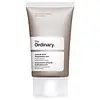What's inside
What's inside
 Key Ingredients
Key Ingredients

 Benefits
Benefits

 Concerns
Concerns

 Ingredients Side-by-side
Ingredients Side-by-side

Water
Skin ConditioningGlycerin
HumectantIsononyl Isononanoate
EmollientPropylene Glycol
HumectantAzelaic Acid
BufferingNiacinamide
SmoothingSqualane
EmollientAlpha-Arbutin
AntioxidantAmmonium Polyacryloyldimethyl Taurate
Emulsion StabilisingHydrogenated Polyisobutene
EmollientSilica Silylate
EmollientHydroxyacetophenone
AntioxidantSodium Hyaluronate
HumectantCaprylyl Glycol
EmollientHydroxyethyl Acrylate/Sodium Acryloyldimethyl Taurate Copolymer
Emulsion StabilisingSodium Hydroxide
BufferingOlea Europaea Leaf Extract
PerfumingParfum
MaskingButylene Glycol
HumectantRosmarinus Officinalis Leaf Extract
AntimicrobialCitrus Grandis Fruit Extract
AstringentSodium Benzoate
MaskingCucumis Sativus Fruit Extract
EmollientSorbitan Isostearate
EmulsifyingPolysorbate 60
EmulsifyingBenzyl Benzoate
AntimicrobialThymus Vulgaris Flower/Leaf Extract
MaskingLactic Acid
BufferingBenzyl Alcohol
PerfumingAlpha-Isomethyl Ionone
PerfumingLinalool
PerfumingPotassium Sorbate
PreservativeCitronellol
PerfumingMorus Alba Root Extract
BleachingCI 19140
Cosmetic ColorantCI 42090
Cosmetic ColorantTocopherol
AntioxidantWater, Glycerin, Isononyl Isononanoate, Propylene Glycol, Azelaic Acid, Niacinamide, Squalane, Alpha-Arbutin, Ammonium Polyacryloyldimethyl Taurate, Hydrogenated Polyisobutene, Silica Silylate, Hydroxyacetophenone, Sodium Hyaluronate, Caprylyl Glycol, Hydroxyethyl Acrylate/Sodium Acryloyldimethyl Taurate Copolymer, Sodium Hydroxide, Olea Europaea Leaf Extract, Parfum, Butylene Glycol, Rosmarinus Officinalis Leaf Extract, Citrus Grandis Fruit Extract, Sodium Benzoate, Cucumis Sativus Fruit Extract, Sorbitan Isostearate, Polysorbate 60, Benzyl Benzoate, Thymus Vulgaris Flower/Leaf Extract, Lactic Acid, Benzyl Alcohol, Alpha-Isomethyl Ionone, Linalool, Potassium Sorbate, Citronellol, Morus Alba Root Extract, CI 19140, CI 42090, Tocopherol
Water
Skin ConditioningIsodecyl Neopentanoate
EmollientDimethicone
EmollientAzelaic Acid
BufferingDimethicone/Bis-Isobutyl PPG-20 Crosspolymer
EmollientDimethyl Isosorbide
SolventHydroxyethyl Acrylate/Sodium Acryloyldimethyl Taurate Copolymer
Emulsion StabilisingPolysilicone-11
Isohexadecane
EmollientTocopherol
AntioxidantTrisodium Ethylenediamine Disuccinate
Isoceteth-20
EmulsifyingPolysorbate 60
EmulsifyingTriethanolamine
BufferingEthoxydiglycol
HumectantPhenoxyethanol
PreservativeChlorphenesin
AntimicrobialWater, Isodecyl Neopentanoate, Dimethicone, Azelaic Acid, Dimethicone/Bis-Isobutyl PPG-20 Crosspolymer, Dimethyl Isosorbide, Hydroxyethyl Acrylate/Sodium Acryloyldimethyl Taurate Copolymer, Polysilicone-11, Isohexadecane, Tocopherol, Trisodium Ethylenediamine Disuccinate, Isoceteth-20, Polysorbate 60, Triethanolamine, Ethoxydiglycol, Phenoxyethanol, Chlorphenesin
 Reviews
Reviews

Ingredients Explained
These ingredients are found in both products.
Ingredients higher up in an ingredient list are typically present in a larger amount.
Azelaic acid is a multitasker ingredient that helps treat acne, pigmentation, and irritation. It is a great option for sensitive skin.
What makes azelaic special?
The best thing about azelaic acid is it's gentleness. It's generally well-tolerated and safe to use alongside other actives like niacinamide or salicylic acid.
Unlike AHAs, azelaic acid will not make you photosensitive/sun sensitive.
You can find this ingredient naturally occurring in grains like wheat, rye, and barley. In cosmetics, azelaic acid is typically lab-made, which is more stable and effective.
Learn more about Azelaic AcidThis is a synthetic polymer. It helps improve the texture of products by adding thickness and gel-like feel.
It is also an emulsifer, meaning it prevents ingredients such as oil and water from separating. It also helps evenly disperse other ingredients.
Polysorbate 60 is used to help stabilize products. It is a surfactant and emulsifier. These properties help keep ingredients together in a product. Surfactants help reduce surface tension between ingredients with different states, such as liquids and solids. Emulsifiers help prevent oils and waters from separating.
Polysorbate 60 is sorbitol-based and created from the ethoxylation of sorbitan. Ethoxylation is a chemical reaction used to add ethylene oxide. Sorbitan is a the dehydrated version of sorbitol, a sugar found in fruits.
In this case, the 60 comes from reacting 60 units of ethylene oxide with sorbitan.
Polysorbates are commonly used in medicine and foods.
Learn more about Polysorbate 60Tocopherol (also known as Vitamin E) is a common antioxidant used to help protect the skin from free-radicals and strengthen the skin barrier. It's also fat soluble - this means our skin is great at absorbing it.
Vitamin E also helps keep your natural skin lipids healthy. Your lipid skin barrier naturally consists of lipids, ceramides, and fatty acids. Vitamin E offers extra protection for your skin’s lipid barrier, keeping your skin healthy and nourished.
Another benefit is a bit of UV protection. Vitamin E helps reduce the damage caused by UVB rays. (It should not replace your sunscreen). Combining it with Vitamin C can decrease sunburned cells and hyperpigmentation after UV exposure.
You might have noticed Vitamin E + C often paired together. This is because it is great at stabilizing Vitamin C. Using the two together helps increase the effectiveness of both ingredients.
There are often claims that Vitamin E can reduce/prevent scarring, but these claims haven't been confirmed by scientific research.
Learn more about TocopherolWater. It's the most common cosmetic ingredient of all. You'll usually see it at the top of ingredient lists, meaning that it makes up the largest part of the product.
So why is it so popular? Water most often acts as a solvent - this means that it helps dissolve other ingredients into the formulation.
You'll also recognize water as that liquid we all need to stay alive. If you see this, drink a glass of water. Stay hydrated!
Learn more about Water